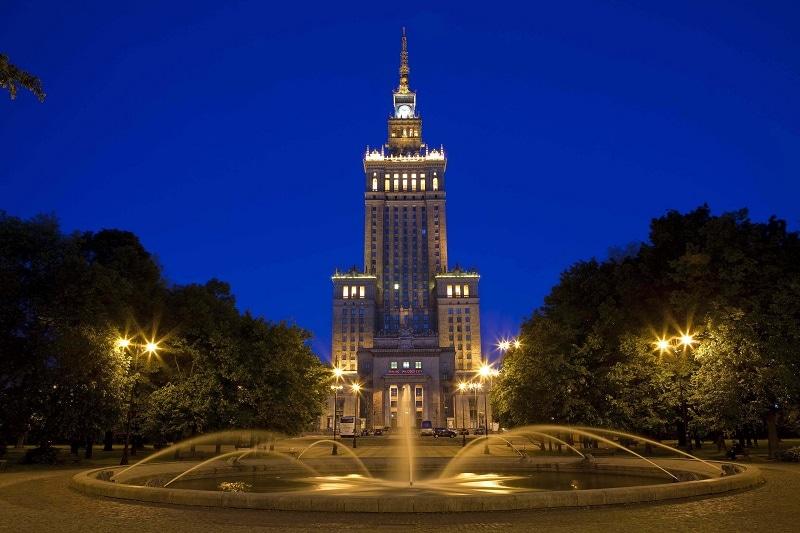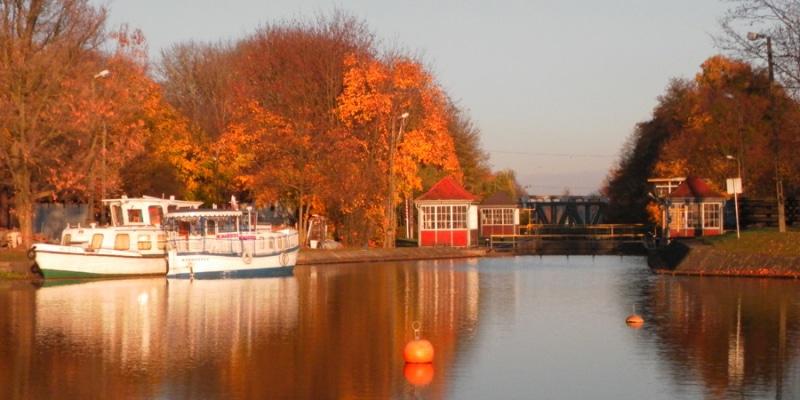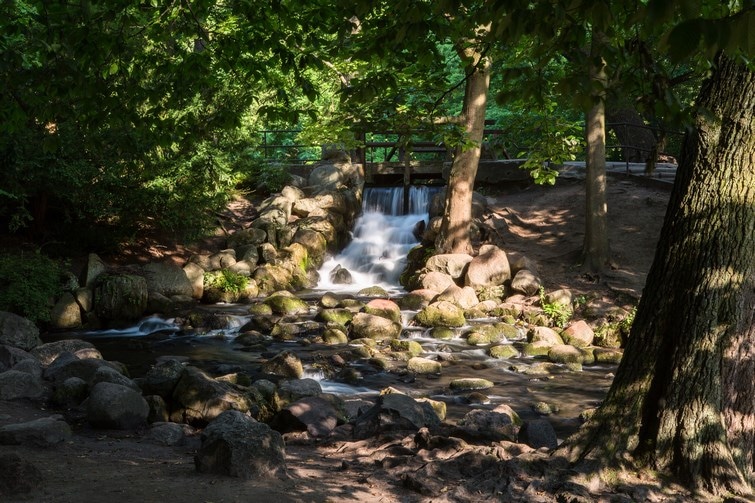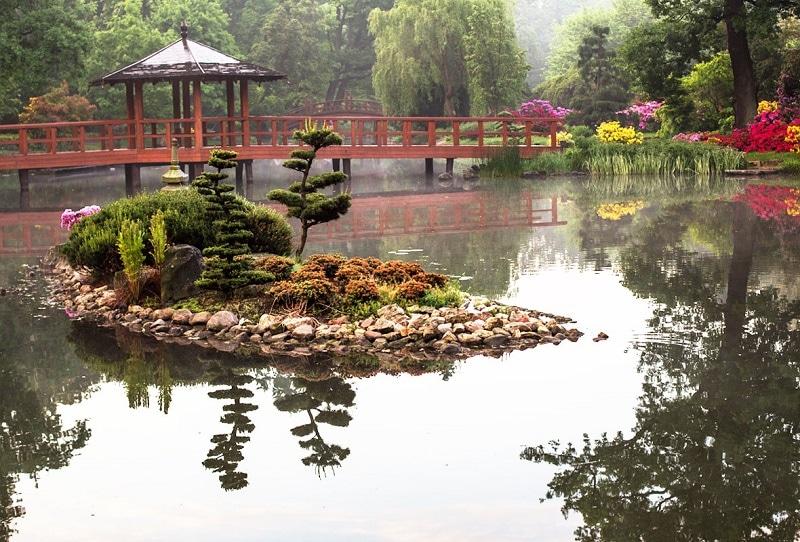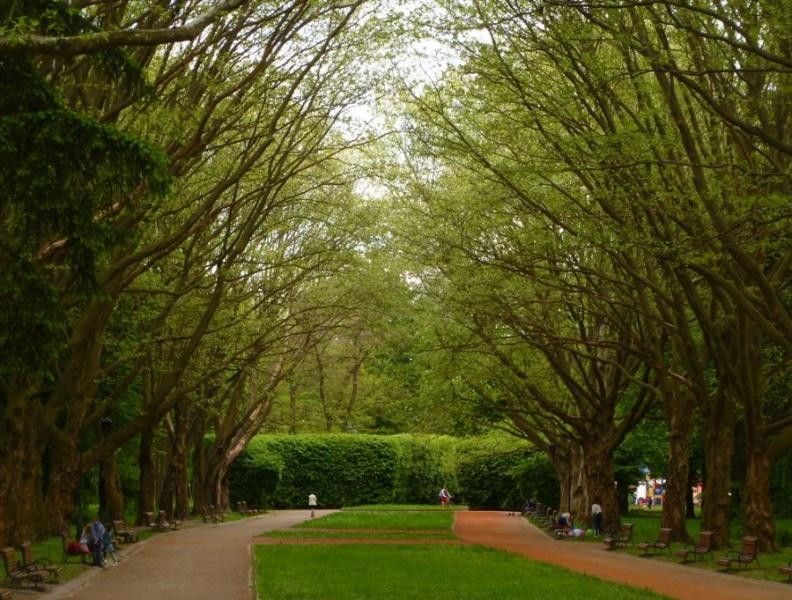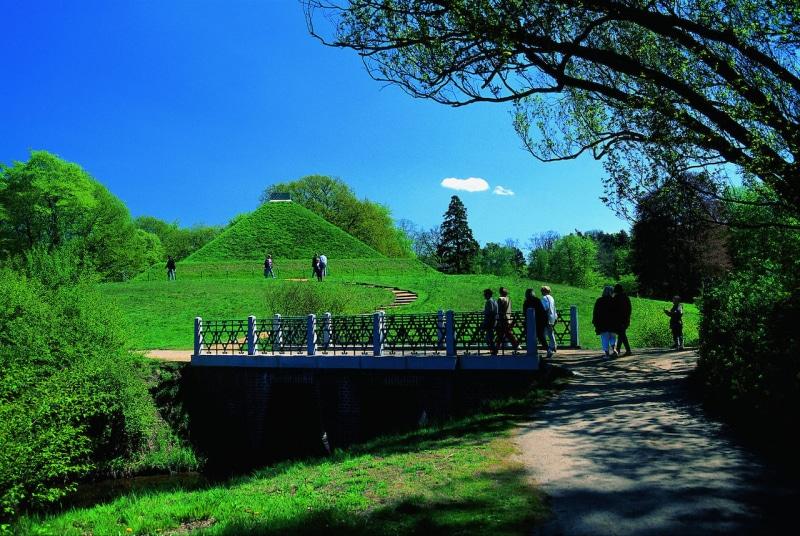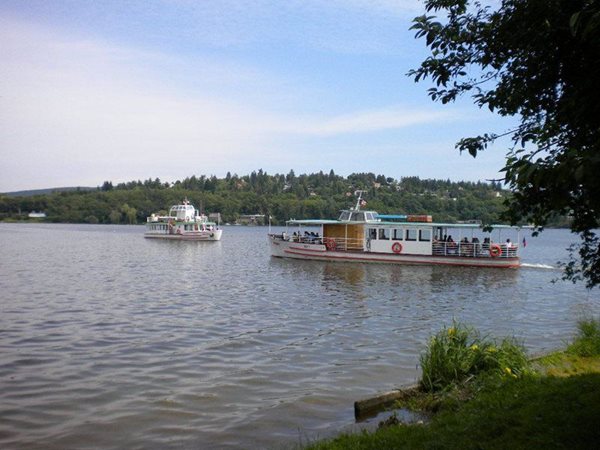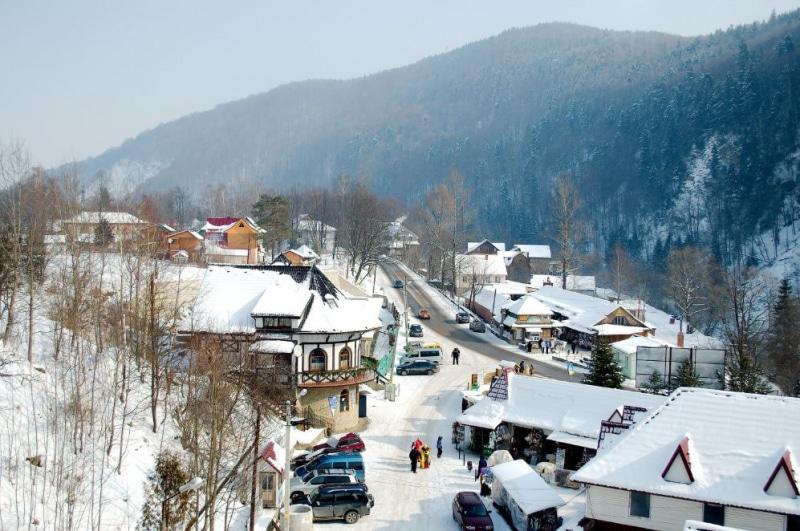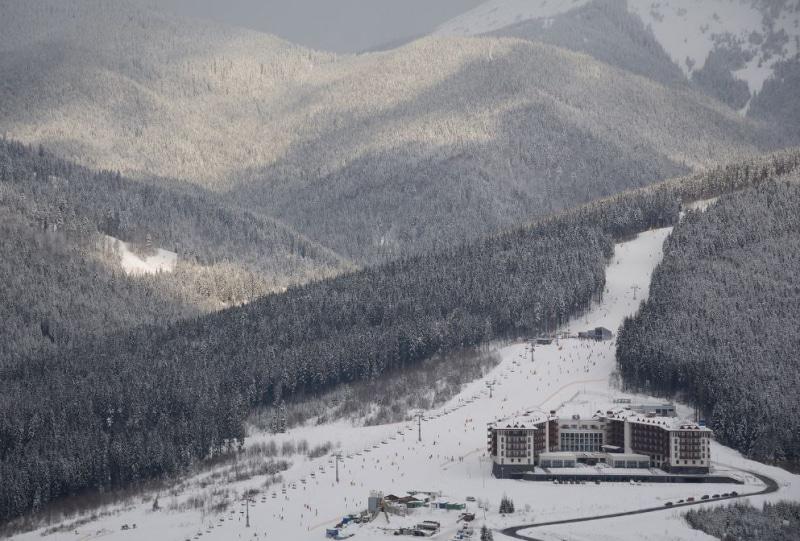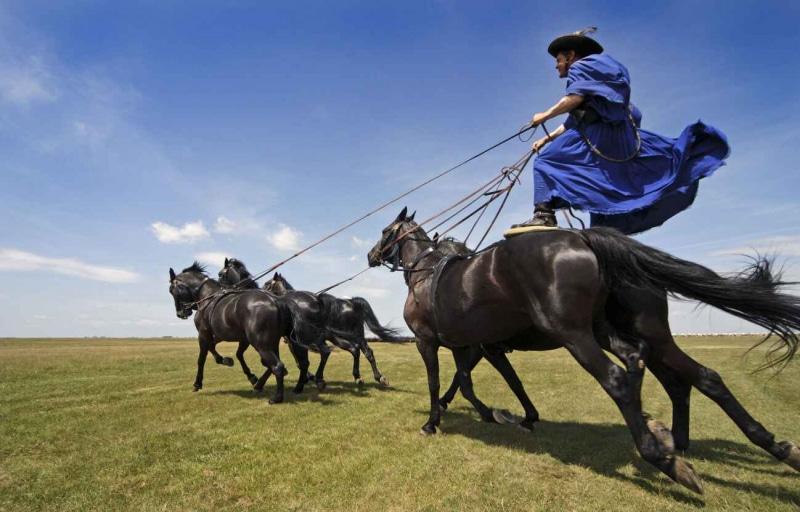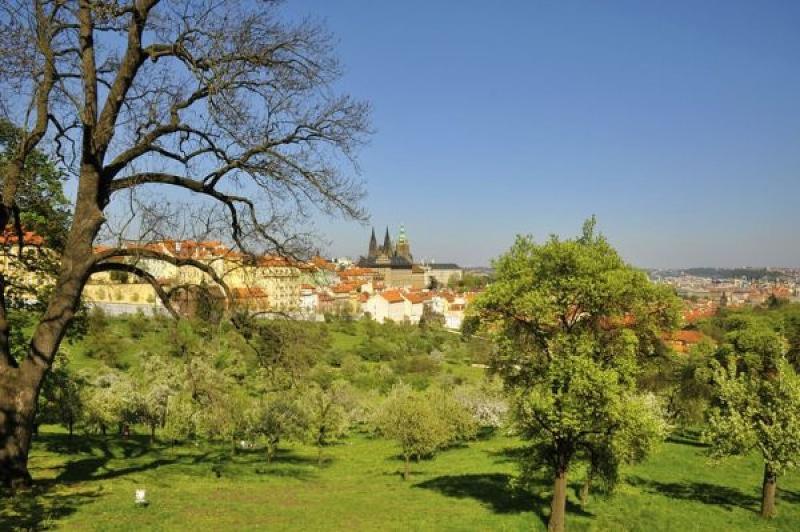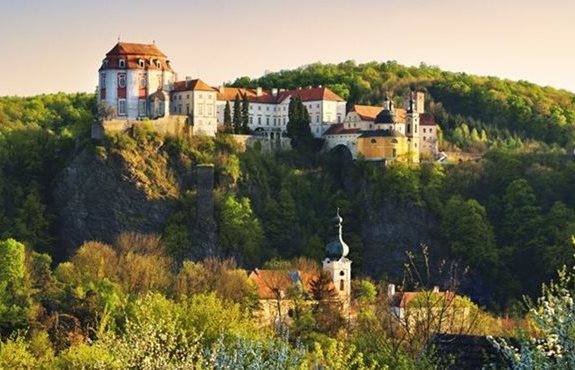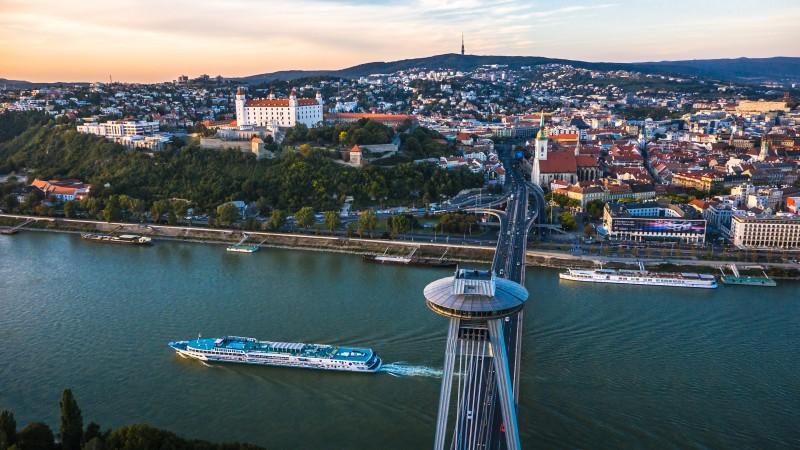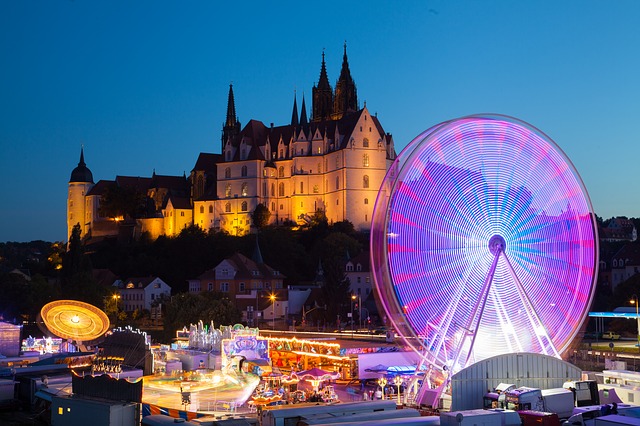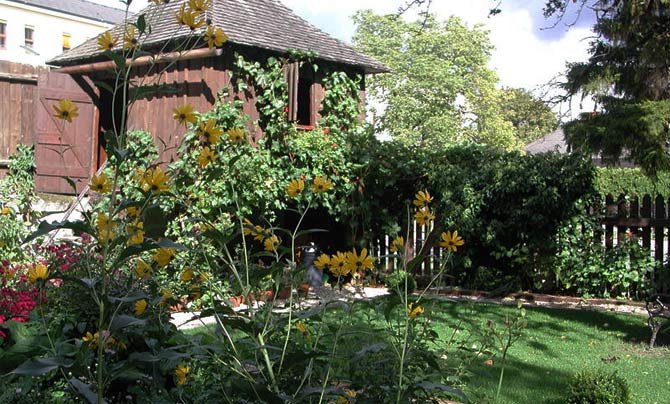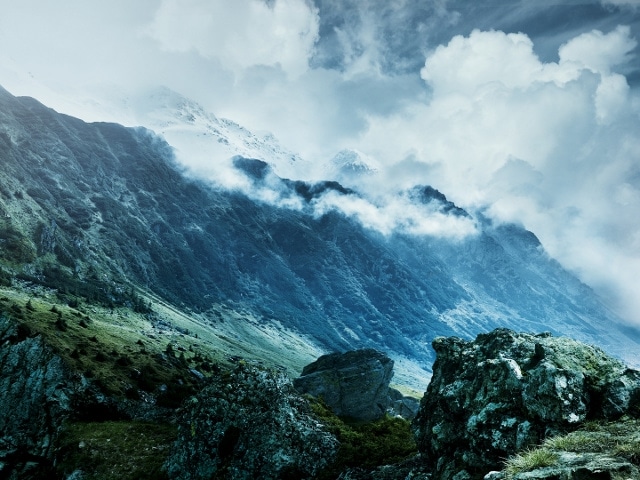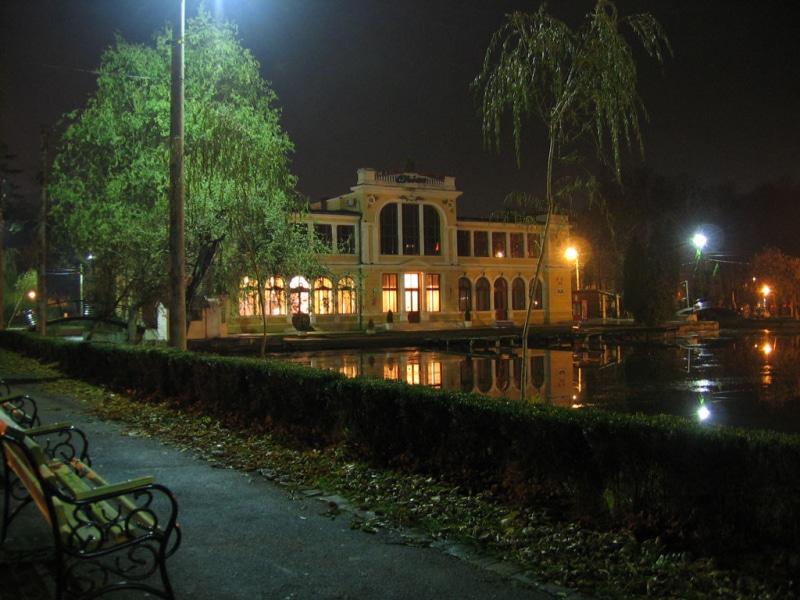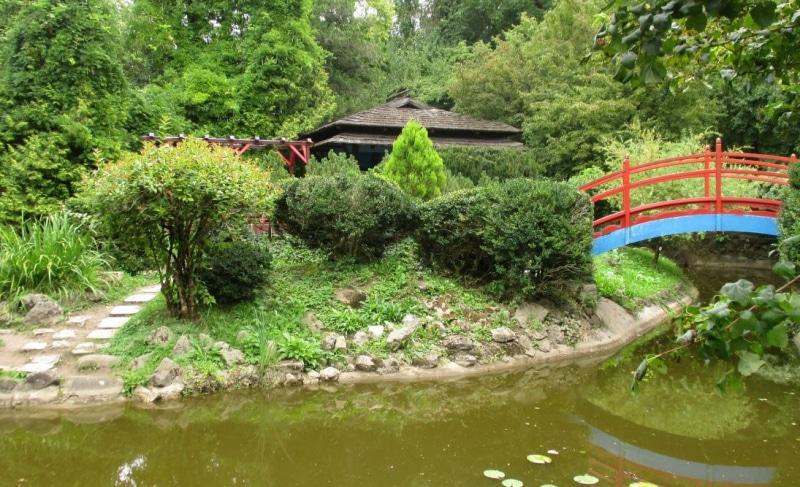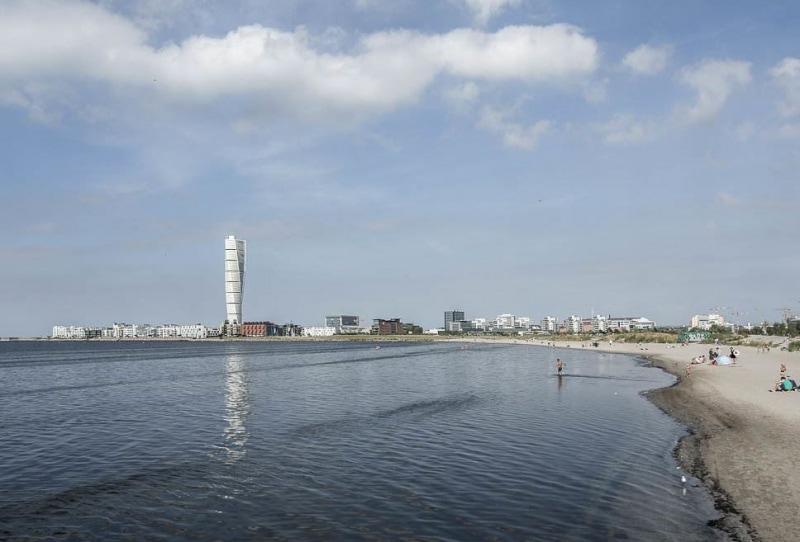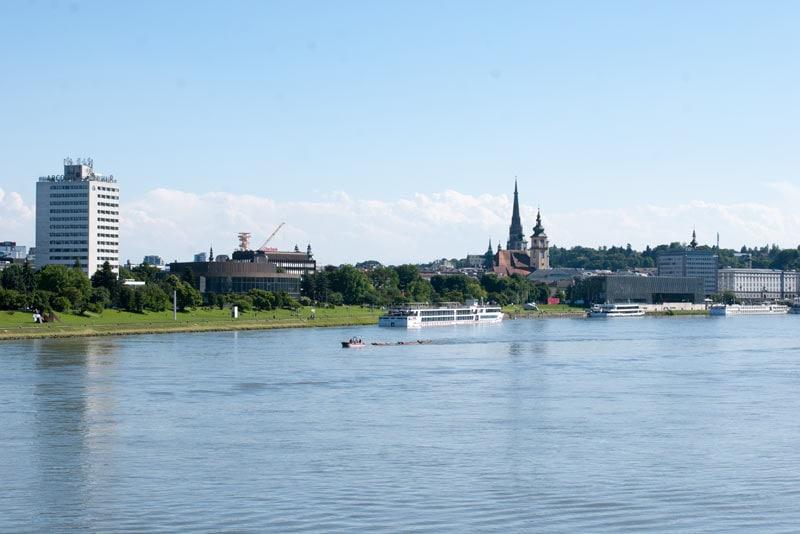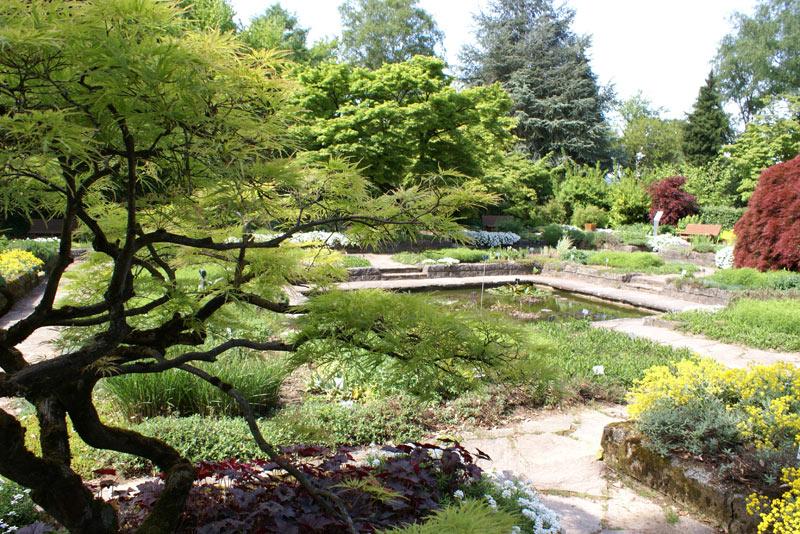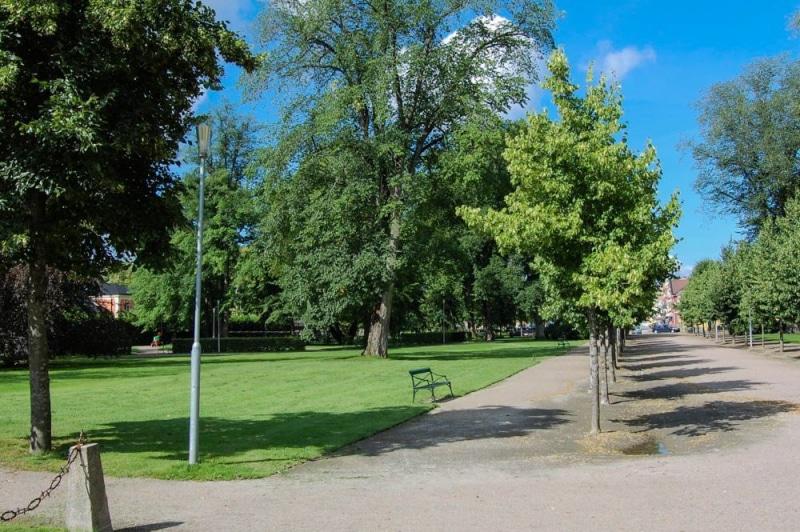NatureViews, Warsaw
Removed from Unnamed collection
Palace of Culture and Science
The highest and most recognisable building in Warsaw can be seen from almost every part of the capital. Where did it come from? It was opened in 1955 on the initiative of Joseph Stalin as a “gift of the Soviet people for the Poles”. Built by Russian workers, for a long time, it was considered to be a symbol of socialist power and the pride of People’s Poland – it was where conventions of the Polish United Workers’ Party took place. Since its very beginning, its monumental interiors have hosted numerous concerts, exhibitions, fairs and shows.
Currently, the palace is home to theatres, a cinema, museums, trendy pubs and the main Warsaw Tourist Information office. Go up to the observation deck on the 30th floor of the building and see the beautiful panorama of the city from a height of 114 metres.
Take a look at the socialist realist sculptures placed in the niches of the palace’s facade. Each symbolises a different field of science, art, technology or culture, for example a young man with a book of classical literature, a member of komsomol, an archer and a woman from Central Asia. In a direct line from the main entrance, you will find a stone honour tribune, from which the first secretaries of the Central Committee of the Polish communist party greeted those marching on the May Day parade. http://warsawtour.pl/en/project/palace-of-culture-and-science-2/
Map
Explore more places related to this search:
Removed from Unnamed collection
Znin town
Żnin is a charming town, situated about 42 km from Bydgoszcz in the historical region of Pałuki, whose origins date back 750 years.Its symbol is the 15th-century tower of the Town Hall. http://www.visitbydgoszcz.pl/en/discover/environs/3020-znin
Map
Removed from Unnamed collection
Bydgoszcz Canal
Bydgoszcz Canal was built in the years 1773-1774 as a part of the international waterway E 70. It connects the Vistula River and the Odra River through their tributaries: the Brda River, the Notec River and the Warta River. The establishment of Bydgoszcz Canal has contributed to the dynamic development of the city. http://www.visitbydgoszcz.pl/en/explore/what-to-see/2364-bydgoszcz-canal
Map
Removed from Unnamed collection
Orunia Park
This is one of the oldest parks in Gdańsk, second largest after the Oliwa Park and located in a completely different part of the city than the first one. It is less known but as charming and worth seeing. In the park there are two ponds and the Park itself is surrounded with hills to which local legends are attached. In the Park we can admire ponds, waterfalls and beautiful alleys with interesting tree varieties. The linden alley and the view of weeping willow trees over the pond add to the charm of the place. Right by the Park there is a historic 19th century manor house. Recently a large playground for children was built in the nearby. That is why it is a place not only for walks but also a place to spend time with the whole family. http://visitgdansk.com/en/corobic/Orunia-Park,a,27,2
Map
Removed from Unnamed collection
Oliwa Park
Adam Mickiewicz Park also referred to as the Oliwa Park is one of the best known places in Gdańsk. The extraordinary location of the park, beautiful flora and small climatic paths of the Park create a unity that is irresistible. The park itself dates backs to the Cistercians who started a vegetable and herb garden by their monastery. Starting your stroll in the Park from the entrance at ul. Grunwaldzka following the longitudinal pond we can see the Botanic Garden created after World War II and where the visitors can also enter the enchanting Palm House. The main path of the Park, stretching from the entrance from ul. Opata Rybińskiego leads to the French part of the Park where you can see the Abbot Palace and further on the path leads to the Oliwa Cathedral. The Abbot Palace now houses a branch of the National Museum in Gdańsk, exhibiting contemporary art. In the Cathedral in the Oliwa Park one may listen to organ concerts and participate in the Organ Music Festival which is organised every summer. In the Park there are many sculptures to admire like: Exhibition of Contemporary Sculpture of Gdańsk, Swietopelk the Great and Mestwin II monuments and the bust of Adam Mickiewicz. The National Museum has another branch in the Oliwa Park - Branch of Ethnography located in the Abbot Granary. Now the Oliwa Park has been expanded with new gardens, e.g. a Japanese garden where you can have some rest during a steady walk and admire the beauty of one of the former city gardens in Gdańsk. http://visitgdansk.com/en/corobic/The-most-beautiful-parks-in-Gdansk,a,27
Map
Removed from Unnamed collection
Park Szczytnicki
The park with an area exceeding one hundred hectares is outstretched between Różyckiego, Paderewskiego, Kopernika and Olszewskiego streets.
The first park in this place was established by L. Hohenlohe, the commander of the city garrison, in the area of the then-existing village of Szczytniki in the suburbs of Wrocław in 1783.
The park with an area of 16 hectares was maintained in English style, but it was heavily destroyed by Napoleon’s soldiers in 1806. In 1833, the recreational areas in this part of the city were enlarged – not only did the park become bigger, but also a racing track was created south of it and functioned there till the beginning of the 20th century. The current appearance and richness of Park Szczytnicki owes much to Peter Joseph Lenne – a royal gardener who arrived in Wrocław from Berlin. At the end of the 19th century, a dyke system was established. Later, at the turn of the 20th century and on the occasion of the Exhibition of the Century in 1913, Park Szczytnicki was enriched with objects that have remained interesting till today and are important points of sightseeing routes. In 1913, the wooden church of Jan Nepomucen was moved to Wrocław and established in the eastern part of the park. Built at the turn of the 17th century, the building had been previously located in Stare Koźle. https://visitwroclaw.eu/en/place/park-szczytnicki
Map
Removed from Unnamed collection
Wroclaw Japanese Garden
It is one of the most popular places for walks. Apart from a few hundreds of original plants, trees, bushes and flowers, there are also Japanese buildings: the gate and the tea pavilion.
One of the attractions of the Garden is a pond with enormous carps and other species of fish. The Garden often hosts events like tea perking, concerts and open-air happenings.
The Japanese Garden was created in the beginning of the 20th century, on the occasion of the Global Exhibition in 1913. It was an initiative of count Fritz von Hochberg, who employed a Japanese gardener Mankichi Arai. After the Exhibition it was dismantled but the plants and the arrangement of alleys and the pond remained the same.
The idea of renewing the Japanese Garden in Wrocław appeared in the 90s. The reconstruction lasted three years, the specialists from Japan came to assist, but the Garden did not survived for long. Two months after the inauguration, the Garden was destroyed by the flood. 70% of the plants were lost. The next opening of the Japanese enclave took place in October 1999. https://visitwroclaw.eu/en/place/japanese-garden-wroclaw
Map
Removed from Unnamed collection
Stryiskyi Park
The Stryi Park is the largest one in the city and is reckoned among the oldest and the most picturesque parks not only in Lviv but in the whole Ukraine. Rightfully recognized as one of the best samples of landscape art, it is the most visited place in the city. Park’s neat lanes are always crowded by people willing to rest from urban fuss and admire magnificent sceneries.
The Stryi Park was designed by the prominent European architect, renowned master of the landscape art, and was laid out in the late 19th century. It occupied the territory of the namesake cemetery that was closed fifty years earlier. After construction’s end, the park was immediately equipped with necessary amenities. More than 40 thousand bushes and trees, including both usual for these latitudes and exotic ones (ginkgo, red oak, tulip tree, and Japanese lilac), were planted there. The Stryi Park is famous for its very rich collection of rare and valuable trees; more than 200 species of plants grow there, greenhouse and rock garden are equipped, and lime and plane alleys are laid out. https://discover-ukraine.info/places/western-ukraine/lviv/1359
Map
Removed from Unnamed collection
Zebracka
Žebračka is an example of a floodplain forest, which has been preserved to the present as a type of hard meadow in the Bečva river basin. It has a size of 235ha and is located on the outskirts of Přerov. In this locality, the most typical wood species are oak, lettuce, hornbeam and ash. The northern part flows through the artificial canal Strhanec, which during its existence has gained a nature close to nature. http://www.pavoj.wz.cz/priroda/zebracka/zebracka.html
Map
Removed from Unnamed collection
Moravsky Kras
The largest and most beautiful karst area in central Europe is a place where visitors have their breath taken clean away. The main attraction here is the famous Macocha Abyss, some 138m deep and steeped in terrifying myths and legends. Without doubt the Moravian Karst is one of the natural wonders of the Czech Republic, which will wow every visitor. http://www.czechtourism.com/c/moravian-karst/
Map
Removed from Unnamed collection
Park Branitz
Branitz Park near Cottbus represents the life’s work as well as the later work of the eccentric landscape gardener Hermann Prince von Pückler-Muskau (1785–1871) and is a masterpiece of the eccentric landscape gardener. http://cottbus-tourismus.de/en/experience-and-detection/parks-of-cottbus.html
Map
Removed from Unnamed collection
Luzanky Park
Lužánky Park was established in 1786 as one of the first public parks in Central Europe. In the middle of the park, you can visit the Renaissance Revival pavilion from 1855 by Viennese architect Ludwig Förster, which has held balls, concerts, celebrations, and various expositions over the years. Today, the building goes by the name Kasino and serves mainly as a leisure-time centre for children.
The park as we know it was created in 1840 by city gardener Antonín Šebánek. In addition to the park’s precious trees, visitors may enjoy watching colourful fish in the stream and cute piglets – a favourite attraction for the park’s youngest visitors. There’s also a playground for children to enjoy and get some energy out.
Lužánky is an ideal place for sporting as well as social activities, as locals come here to jog, play tennis, pétanque, and volleyball, exercise in an outdoor gym, or get a bite to eat at one of a number of nearby restaurants. Visitors can also use a public grill for barbecuing. https://www.gotobrno.cz/en/place/park-luzanky/
Map
Removed from Unnamed collection
Brno Reservoir
A popular recreational resort and an ideal place for all kinds of water sports. The banks are lined with sport facilities, restaurants, pubs and kiosks. The regular water transport line serving the route Brno - Veverská Bítýška is in operation every year from April to September. The visitors coming from the city centre can get to the reservoir by public transport. http://www.czechtourism.com/c/brno-reservoir/
Map
Removed from Unnamed collection
Yaremche
Situated in the picturesque Prut River valley, this little town is one of the most famous tourist centers of the Carpathian region. First and foremost, Yaremche is a popular ski resort. Its numerous visitors are attracted by its breathtaking mountain landscapes, pure air, unique Guzul character, and variety of leisure activities.
During the winter, Yaremche is populated with skiers and snowboarders. Winters here are a skier’s paradise: it is not too cold, and there is very little wind, but a lot of snow. The mountain slopes especially good for beginners, but are unlikely to impress professionals. Thus, more experienced skiers often choose to visit neighbouring ski resorts - Bukovel, Vorohta and Yablunitsa.
But you can admire Yaremche’s unique architecture of all year round! You will find many interesting churches, monasteries, and landmarks in the town. Yet perhaps the town’s main attraction is the Probiy waterfall. It is certainly not the highest (it is only 8 meters – 26 feet – high), but it is the most powerful and picturesque waterfall in all the Ukrainian Carpathians. The torrents of the Prut River, which find their way through the stones, create an unforgettable show, which you can watch from a small footbridge that crosses the river.
Not far from the waterfall lies a well-known souvenir market, which has already become one of Yaremche’s most popular attractions. You can buy original handicrafts of local craftsmen, at the same time getting acquainted with the distinctive Guzul culture. https://discover-ukraine.info/index/western-ukraine/yaremche
Map
Removed from Unnamed collection
Bukovel
Despite being relatively young, Bukovel is known as one of the most famous and ultramodern ski resort in Ukraine. This recreational haven owes its enormous popularity among both Ukrainian and foreign lovers of outdoor activities to its climate, endless comforts, and plenty of well-equipped skiing trails.
Bukovel is situated in one of the most beautiful places in the country, the Ukrainian Carpathians, at an altitude of 920 meters (over 3000 feet). Because snows fall early in the year, and stay for a long time, from November to April the resort has ideal skiing and snowboarding conditions. The resort has 16 ski lifts, ranging from 650 meters to 2000 meters (2130 to 6560 feet) long, which make it one of the biggest ski resorts not only in Ukraine but all of Eastern Europe.
Bukovel is especially proud of its excellent ski trails, which, in total, are over 50 kilometers (30 miles) long. They are spread out across five mountains, on specially prepared slopes. Each visitor can choose a track to his or her experience level: there are difficult trails for professionals, and easier ones for beginners; they even have slopes for children. All the trails are equipped with snow canons and are constantly maintained, so they always stay in perfect condition. Bukovel’s slopes are also lit up, so they stay open in the evening. These high-grade trails attract not only skiers, but also those who are fond of snowboarding and riding snowmobiles. https://discover-ukraine.info/index/western-ukraine/bukovel
Map
Removed from Unnamed collection
Carpathian National Nature Park
This is the first and the largest national park in Ukraine, created in 1980 to protect the unique natural riches of the Carpathian Mountains. Majestic mountains, picturesque valleys, mountain pastures, crystal lakes, pure rivers, healing springs, valuable monuments of archaeology, history and architecture - all of them make the Carpathian Natural Park desirable to many travellers from all over the world.
Located in the mountains of the Prut River basin, the park occupies a territory of over 50 thousand hectares. It amazes not only with its fantastic landscapes and unforgettable scenery, but also with the variety of its flora and fauna. A large number of various plants grow in the part, many of which are on the endangered species list, and almost 200 species of animals and birds live here.
Nine hundred meters (2950 feet) above sea level, the Guk waterfall is considered to be the park’s gem, as are the glacial lakes Maricheika (on the mountain Shurin-Gropa) and Nesamovyte (on the mountain Turkul). It is said that sinners’ souls live in the Nesamovyte lake, so one should not swim and throw stones into it. If its waters are disturbed, the sky will fall down in a hailstorm. To judge from the frequency of storms in the region, the park’s guests frequently break this taboo. https://discover-ukraine.info/places/western-ukraine/ivano-frankivsk/80
Map
Removed from Unnamed collection
Charles Bridge
Prague’s oldest bridge was built to replace the Judith Bridge that had been badly damaged by floods in 1342. The Stone, or Prague, Bridge, called Charles Bridge since 1870, was begun in 1357 by Charles IV and was completed in 1402. The bridge is built of sandstone blocks, flanked at each end by fortified towers (Lesser Town Bridge Towers, Old Town Bridge Tower). From 1683 to 1928, 30 statues of saints were carved to decorate the bridge, the most famous of which is the statue of St John of Nepomuk. https://www.prague.eu/en/object/places/93/charles-bridge-karluv-most?back=1
Map
Removed from Unnamed collection
Hortobagy
Proudly bearing its title of UNESCO World Heritage Site, Hortobágy National Park is the perfect archetype of pristine natural landscapes. This is the place where everyone longs to find refuge from the monotony of modern human existence. The feeling of unfettered freedom, encapsulated in the spectacle of the endless horizon, mirages, grazing herds of cattle and horses, and sweep-pole wells, will capture your imagination and soul during a horse-and-carriage ride or “puszta” safari.
A picturesque trip to the fishponds on the small narrow-gauge train, combined with some birdwatching, will serve unique experiences to both young and older adventurers. Here the breeze wafts the scent of fragrant chamomile, mint, and artemisia from wild fields, gently touching your nose just like the waves of the ocean rhythmically splashing on the shore. It is a place where you will reinterpret the meaning of silence.
It is a place where you might even reach celestial bodies during the special night treks in Starry Sky Park. In Hungary’s oldest and largest national park, awarded the European Destinations of Excellence (EDEN) prize, hundred-year-old herdsman’s traditions are still part of people’s means of subsistence and not mere promotional gimmicks. https://visitdebrecen.com/see-do/hortobagy/
Map
Removed from Unnamed collection
Petrin Hill
Overlooking the glorious city of Prague is the equally beautiful Petřín Hill, one of the former vineyards of King Charles IV. This is the place to go and relax under a blooming cherry tree during a clear spring day or smell the fragrant beauties in the lovely rose garden on a lazy summer night, and it is also the perfect place to capture the wonder of Prague via your camera. It is a steep walk up Petřín, so if you wish, you can take the cool funicular up to the summer restaurant or all the way to the top of the hill. Petřín Hill also features a miniature Eiffel Tower (built for the for the 1891 Prague Exposition), Petřín Lookout Tower, one of the best observation points in Prague, a mirror maze for children and adults alike, mysterious walking paths that lead to secret gardens, fountains, a traditional Ukrainian wooden church, and even a small waterfall by the adjoining Kinsky garden. A perfect place for a day of relaxing or even a picnic, Petřín Hill is busiest on May 1st, when lovers go and kiss under cherry trees to seal their romance forever. https://www.prague-stay.com/lifestyle/review/224-petrin-hill
Map
Removed from Unnamed collection
Podyji National Park
Even though it is the smallest Czech national park, the Podyjí National Park is among the most important natural sites in Central Europe. Here you will find an exceptionally well-preserved river valley in a richly wooded landscape full of breathtaking scenery. http://www.czechtourism.com/c/podyji-national-park/
Map
Removed from Unnamed collection
Bratislava Castle
The former seat of the rulers, today the symbol of Bratislava and the seat of the Museum of History. There is a wonderful view of the city and the neighbouring countries from its 47-metre-high crown tower in which royal coronation jewels used to be deposited. https://www.visitbratislava.com/places/bratislava-castle/
Map
Removed from Unnamed collection
UFO
A unique observation tower, a bar and a restaurant are located at the very top of the SNP bridge pylon.
“Floating” on the pillar of the New Bridge (Nový most), this restaurant offers a pretty unconventional experience, from where you can enjoy a unique panoramic view of Bratislava and its surroundings from above. The restaurant interior is elegantly furnished and the menu contains a wide variety of different international dishes. The restaurant has a total of 140 seats and reservations are possible. Offering an impressive view, this restaurant is a landmark of Bratislava and represents Slovakia in the World Federation of Great Towers. https://www.visitbratislava.com/places/ufo/
Map
Removed from Unnamed collection
Prater
An amusement park for many, place of nostalgic dreams for some, oasis of greenery for almost everyone – and the location of the Giant Ferris Wheel, one of Vienna’s most famous symbols. The Vienna Prater is in season from March to October. But the world-famous Giant Ferris Wheel and a few other attractions are open all year round.
The Vienna Prater is entertaining and exciting, but it can also be relaxing and quiet. One part of it contains attractions ranging from a nostalgic merry-go-round to an ultra-modern roller coaster. In the other area, known as the “Green Prater,” one finds widespread meadows to lie on, shady trees, and quiet paths. The motto is to have fun and enjoy yourself.
Today, the Green Prater is a paradise for walkers, runners, bicyclists and horseback riders, and is highly appreciated as a large leisure area within the city limits. To get an overview of this green oasis in the city of Vienna, one best takes the Liliputbahn, a miniature railway spanning more than three miles. https://www.wien.info/en/sightseeing/prater
Map
Removed from Unnamed collection
The Garden Tulln
From April to October, Garden Tulln is the main attraction in town for gardening enthusiasts. Garden Tulln opened as a garden show for the province in 2008 and continues to be a showcase project in Europe today with its 70 ecologically maintained extravagant model gardens!
Garden Tulln provides ideas for amateur gardeners, an excursion destination for nature lovers and an adventure land for families. It is a green paradise ideal for strolling and marvelling, playing and entertaining, relaxing and rejuvenating!
Besides the diversity of its individual model gardens, this garden show also has the following attractions in store for all generations:
Treetop trail: View of model gardens and the Danube landscape from 30 meters in the air;
Tips and tricks: Help and advice from gardening pros and nature-in-the-garden experts;
Nature playground: Playing and exploring on the biggest natural adventure playground in Lower Austria. http://erleben.tulln.at/en/garden/garden-city-tulln/garten-tulln/
Map
Removed from Unnamed collection
Wachau Cruise
Between late March and early November, the proud red and white DDSG fleet departs for relaxed cruises through the Wachau region, a UNESCO World Cultural Heritage, up to 3 times per day in each direction. A cruise in the Wachau region is always a special experience – no matter if in spring when the apricot and other trees are in full bloom, in summer when you can enjoy bright blue skies, or in autumn when you can watch the afternoon sun bathing the vineyards in red and gold. Our dense timetable gives you many options of experiencing the region from the water between Krems, Dürnstein, Spitz, Emmersdorf and Melk. https://www.ddsg-blue-danube.at/wachau/wachauschifffahrten/?lang=en
Map
Removed from Unnamed collection
Palace Park
The Palace Park, with the Leopoldine Temple and the Orangery at the heart of it, is a jewel.
The Palace Park is one of the most important landscaped gardens dating back to the 19th century. It covers an area of about 50 hectares and forms the northern edge of the city and goes all the way down to Bergstrasse and up into the Leitha Mountains.
The park comprises four ponds (Leopoldine pond, Obelisk pond, Herzerl pond and Engine pond), uncounted exotic trees and bushes.
The Leopoldine Temple built by Moreau in 1806 is a circular temple with Egyptian-style columns erected right above the Leopoldine pond. Inside the temple there is the statue of "Leopoldine", made in 1805 by the famous Italian sculptor Antonio Canova. https://eisenstadt-leithaland.at/palace-park.html
Map
Removed from Unnamed collection
Haydn's Herb Garden
The Haydn's family garden hut with its herb gardens represents a true rarity.
When Joseph Haydn bought his house in the city in 1766, he also acquired the little garden by the hospital, situated outside the city walls, and the little wooden hut.
Haydn transformed this small piece of land in a flower and herb garden and not only came there to seek peace and quiet, but also to compose.
The remains of the kitchen and herb garden have been transformed into a show garden with plants that were en vogue in Haydn's times. It invites the visitors to learn more about century old recipes and herbal secrets. https://www.eisenstadt-leithaland.at/en/sightseeing/sightseeing/haydns-herb-garden
Map
Removed from Unnamed collection
Calimani National Park
The Calimani National Park (Parcul National Calimani) is a protected area situated in Romania. Located in Calimani Mountains, including the largest volcanic crater in Romania with a diameter of about 10 km (out now), Calimani National Park has a total area of 24.041. http://www.uvisitromania.com/tourist-attractions/suceava/calimani-national-park-id326
Map
Removed from Unnamed collection
Central Park Simion Barnutiu
Creating Central Park had been one of the first initiatives of urban remodelling of the city at the end of the 19th century. Its purpose had been the creation of a leisure spot in the close proximity of the city center. The initial name of the area field was ants’ grove situated on the bank of the river Somes. At the beginning of the 19th century, this spot was visited by all citizens of Cluj, the furrier János Meleg provided the public with refreshments.
In 1827, the Women’s Charity Organization will rent the grove with the intention to create a “place suitable for longer strolls” and a beer garden based on a contract of 12 months. This contract would also determine the municipality to initiate and sponsor some of the works necessary to drain and consolidate the land that had been a swampy area frequently flooded by the river.
In the year 1833, together with the return of the Gubernium a decision will be made on how to spend the gathered money on the development of the park. On this occasion they will establish and name the members of the Promenade comity, a council made up of important members of the urban community; they will also employ the gardener József Schütz to plant, clean and maintain the park. The park itself had been originally founded on the 22nd April 1838 and after two years the engineer Sámuel Hermann was entrusted with the design of the park. http://www.visitclujnapoca.ro/en/atractii-turistice/best-of-cluj-napoca/simion-barnutiu-central-park.html
Map
Removed from Unnamed collection
Alexandru Borza Botanical Garden
Alexandru Borza” Botanical Garden (42 Republicii Street) – Being a national museum, the garden was founded in 1872, having an initial surface of 4.3 ha. Thanks to prof. A. Richter, the surface has reached 9.6 ha.
In 1920, professor Alexandru Borza elaborated the re-organization plan of a new botanical garden, whose arrangement was carried out from 1920 to 1930. Nowadays, the garden has a surface of 14 ha, a level difference of 20 m and is divided into various sectors, sheltering 11.000 exhibits: the ornamental sector ( The Mediterranean Garden, Rosarium, The Japanese Garden), the phytogeographic sector (the plants are arranged according to their natural associations – The Roman Garden), the systematic sector (the plants are organized by phylogenetic principles), the economic and medical sector, the sector of rare and endemic plants of Romania`s flora.
The two groups of greenhouses, having a surface of 3500 m2, with tropical plants of great scientific and utilitarian interest, are remarkable. In the precincts of the Botanical Garden functions the Botanical Institute, with its two components: the Botanical Museum (6 910 botanical pieces, representing exotic and indigenous plant exhibits) and the Herbarium (660 000 herbarium sheets of dried plants – arranged in special lockers). http://www.visitclujnapoca.ro/en/atractii-turistice/best-of-cluj-napoca/alexandru-borza-botanical-garden.html
Map
Removed from Unnamed collection
Ribersborg Beach
The beach Ribbersborgsstranden and the associated recreational area are located in Malmö district Ribersborg and therefore only in about a three kilometres distance from the city center of Malmö.
The extensive green areas and the long sandy beach were already created in the mid-1920s as a recreational area for the city's population. The sand for the beach was specially fetched from the Oresund and then delivered by train.
The entire recreational area extends from the new district Vastra hamn along the coast up to Limhamn. Walking and biking paths lead through the spacious lawns behind the beach. There are also several playgrounds for football, rugby and American football.
The beach is equipped with a total of 10 bathing piers. If you walk along the beach from Västra Hamnen, you meet the Kallbadhus Ribersborg at the first bridge. At the end of a broad pier is the bathhouse, built in 1898 and fully restored in 2009. In addition to a sauna, the complex has a café and restaurant where you can enjoy a wonderful view of the sea. https://www.guidebook-sweden.com/en/guidebook/destination/ribersborgsstranden-bathing-beach-in-malmoe
Map
Removed from Unnamed collection
Boat ride on the Danube
Linz changes your perspectives! Would you like to see how? Where better than by discovering the city from the Danube! You can also go on excursions into the beautiful Danube region from Linz, or take a tour or an evening cruise where you can listen to music and dine in the restaurant. The shipping companies based in Linz invite you to unwind on a boat trip on Danube, to escape the stress of everyday life and to relax on the Danube. https://www.linztourismus.at/en/leisure/discover-linz/activities/round-tours/boat-cruises/
Map
Removed from Unnamed collection
Botanical Garden Linz
The Botanical Garden on the "Gugl" are among the most beautiful in Europe. Over an area of 43,000 m², there are more than 10,000 various types of plants to admire. In the five greenhouses the splendour of exotic specimens predominates the garden’s unique collection of cacti, the finest in Europe.
The natural conditions allow the exhibited plants to be grouped in complete landscapes, so that visitors can imagine they are in the middle of the plant’s natural habitat. https://www.linz.at/english/tourism/921.asp
Map
Removed from Unnamed collection
Linneparken
The Linnéparken is located directly at the cathedral in the center of Växjö and is part of the city park of Växjö, along the lake Växjösjön. The Linnéparken consists of three differently designed areas – an English park with winding paths and large trees, a modern park with open green spaces, playgrounds and water areas, as well as a classic formal park.
An important theme of the park is dedicated to the world-famous botanist Carl von Linné. Born in Råshult, Småland in 1707, Linné was a high school student at Karolinerhuset, which is located in the northern part of the park next to the cathedral. As a professor of botany at the university in Uppsala, he developed the system of the Latin naming of living creatures and plants and their classification, which has so far been used in biology. Planting in the Linnéparken illustrates the Linnaean system for dividing plants into 24 different classes.
There is also a cactus planting in the park, which is included in an annual changing plant theme, a flower path, various shrubs, as well as an open-air stage. https://www.guidebook-sweden.com/en/guidebook/destination/linneparken-park-vaexjoe
Map

